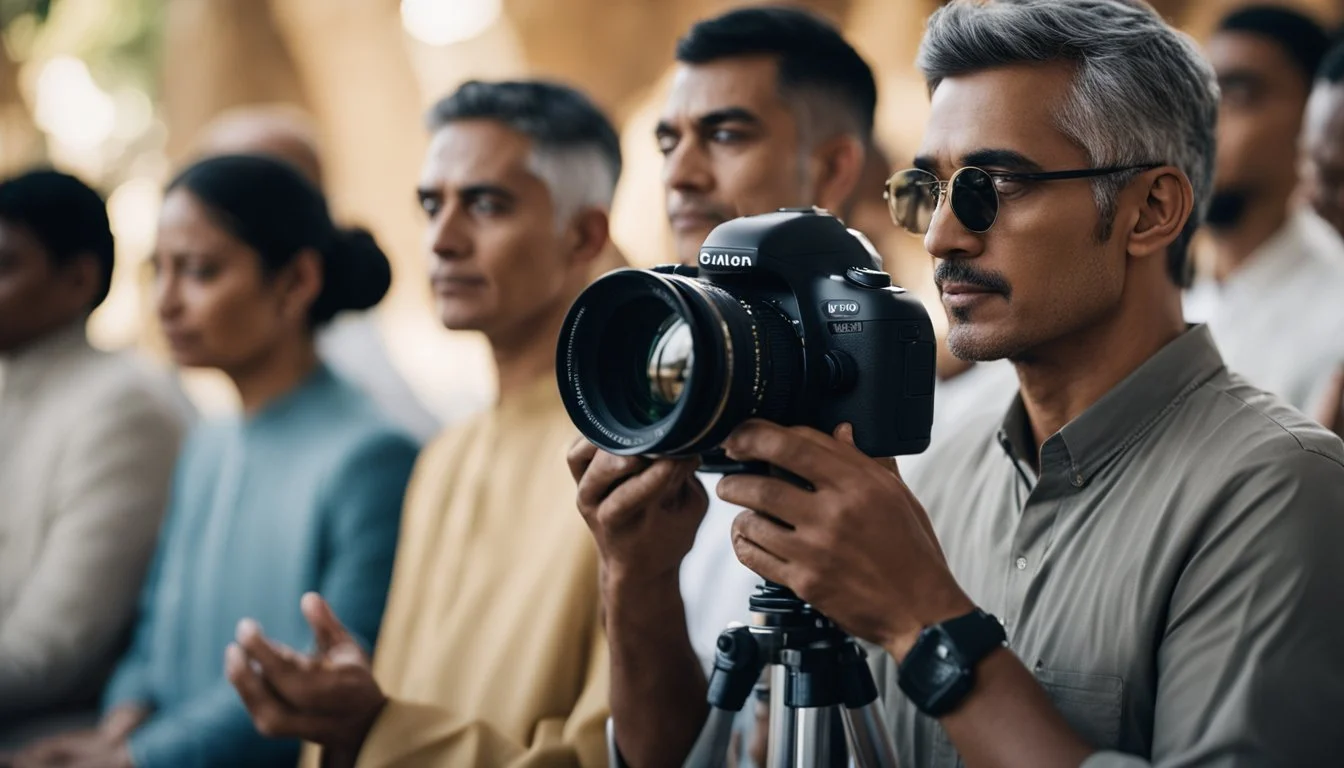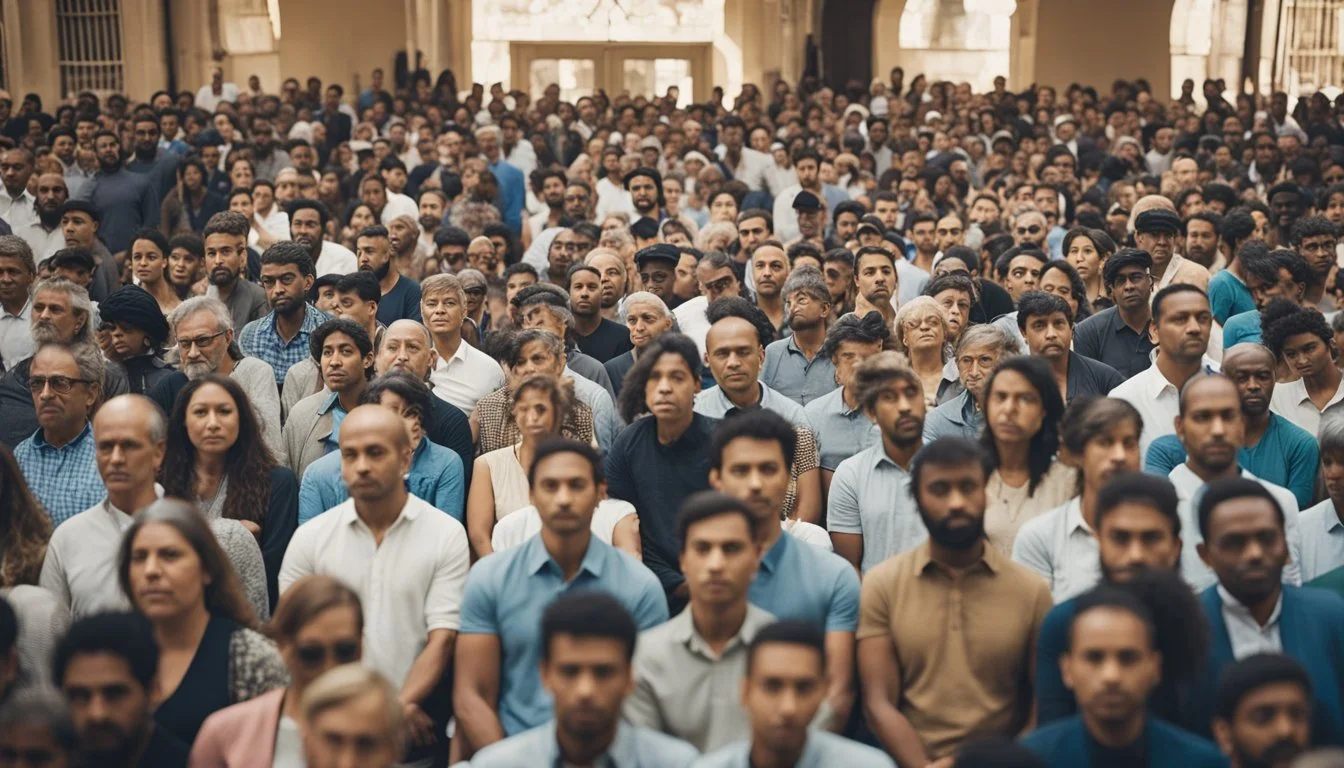Amir Bar-Lev: Unraveling the Intricacies of Faith and Belief in Modern Society
Amir Bar-Lev's work as a documentary filmmaker dives deep into the complex realms of faith and belief, making him a significant figure in contemporary cinema. Known for films like "Fighter" and "The Tillman Story," Bar-Lev has an adept ability to capture human emotions and unravel intricate narratives with clarity and empathy. His documentaries often reflect a careful balance of factual storytelling and emotional depth.
A hallmark of Bar-Lev's filmmaking is his exploration of the human experience, delving into themes of spirituality, morality, and personal conviction. In "The Tillman Story," for instance, he examines the life and death of Pat Tillman, portraying the nuances of heroism and the impact of institutional deceit. This work, amongst others, showcases his commitment to revealing profound truths through meticulous research and compassionate storytelling.
Bar-Lev's unique perspective and dedication to truth-telling have earned him critical acclaim and a devoted following. His films are not just documentaries but insightful analyses that invite viewers to question their perceptions and beliefs. By examining deeply personal and often controversial subjects, Bar-Lev creates a compelling dialogue between the film and its audience, drawing them into a deeper reflection on faith and belief.
Amir Bar-Lev: Profile of a Filmmaker
Amir Bar-Lev, noted for his incisive documentaries exploring complex themes, has garnered critical acclaim and numerous awards. His career highlights and influential works reflect a dedicated pursuit of storytelling excellence.
Early Career and Influences
Amir Bar-Lev was born in 1972. He launched his career with the documentary "Fighter" in 2000. This film was praised for its compelling exploration of memory and survival, earning accolades from prestigious publications.
Bar-Lev’s formative years were marked by influences from renowned documentarians, emphasizing truth and profound narratives. His education and early industry experiences shaped his approach to filmmaking, balancing insightful storytelling with meticulous research.
Notable Works and Achievements
Bar-Lev directed several acclaimed documentaries. "My Kid Could Paint That" delved into the controversy surrounding a young painter. "The Tillman Story" examined the life and death of NFL player Pat Tillman, exposing governmental misinformation.
"Long Strange Trip," a comprehensive portrayal of the Grateful Dead, premiered at Sundance and is available on Amazon Prime. Bar-Lev's distinctive style won him an Emmy, a Grammy nomination, and several festival awards, solidifying his reputation in the documentary genre.
Exploring Faith and Belief in Documentaries
Documentaries examining faith and belief offer a rich exploration of the ways religion and spirituality shape individuals and societies. These films use various techniques to present religion's complex narratives and practices.
Representation of Religion and Spirituality
Documentaries often depict diverse religious practices and beliefs. Films like Into Great Silence immerse viewers in the monastic life of Carthusian monks.
Visually compelling scenes provide deep insights into the daily devotion within religious communities. Amir Bar-Lev's works, such as The Tillman Story, touch on spiritual themes and the search for meaning in tragedy.
Faith-based documentaries take audiences on international journeys. For instance, Oprah Winfrey's Belief series traverses six continents, showcasing how people from different backgrounds pursue spiritual growth and understanding.
Techniques for Unraveling Complex Narratives
Documentary filmmakers employ storytelling techniques to make complex religious themes accessible. They frequently use interviews, archival footage, and personal testimonies. Amir Bar-Lev's films often feature intimate interviews that reveal personal struggles and triumphs.
Editing techniques like montage sequences blend past and present, helping viewers grasp the historical and cultural context of religious practices. Narration and expert commentary provide additional layers of insight, clarifying difficult concepts.
Visual imagery also plays a crucial role. Cinematic techniques such as slow motion and time-lapse offer powerful representations of spiritual rituals and emotions, creating a profound connection with the audience.
Documentary Filmmaking Ethics
Documentary filmmaking requires balancing objectivity with subjectivity and presents unique challenges in portraying deeply personal aspects such as faith.
Subjectivity Versus Objectivity
Filmmakers navigate the thin line between presenting facts and interpreting them. This balance is critical in maintaining credibility. While facts must be presented accurately, a filmmaker's perspective inevitably shapes the narrative.
Bar-Lev's documentaries often highlight this interplay between the filmmaker's viewpoint and the subject matter. His work showcases how subjective elements can enrich the storytelling, yet underscores the importance of grounded factual representation.
Challenges in Portraying Faith
Faith is a deeply personal and complex theme. Capturing it in a documentary comes with significant challenges.
Filmmakers need to represent beliefs respectfully and authentically, avoiding oversimplification. Bar-Lev's approach in documenting faith-related aspects demonstrates sensitivity to these issues. He seeks a balance between depicting personal stories and respecting the broader context of those beliefs.
Navigating these challenges demands a nuanced understanding of both the subject and the audience's perceptions. The portrayal must aim to educate and evoke empathy, ensuring the integrity of the subjects' beliefs.
Audience Reception and Impact
Amir Bar-Lev's documentary films have significantly resonated with both critics and viewers, particularly in their exploration of faith and belief. His works often provoke deep reflections and varied reactions from audiences.
Critics' Perspectives
Critics have lauded Amir Bar-Lev's documentaries for their profound storytelling and keen attention to complex subjects. Fighter (2000) received acclaim from publications like Newsweek, Rolling Stone, and The Village Voice, being named among the top documentaries of the year.
The New Yorker described it as "brilliant," while the New York Times called it "enthralling." These reviews highlight how his films manage to captivate and challenge viewers through meticulous narrative craft. Bar-Lev's ability to unearth compelling human stories within larger sociopolitical contexts has been a key factor in his critical success.
Viewers' Engagement with Themes of Faith
Viewers find Bar-Lev's nuanced examination of faith and belief both thought-provoking and deeply engaging. His film The Tillman Story delves into the multifaceted nature of belief, scrutinizing how public narratives around Pat Tillman were shaped and often distorted.
This exploration not only engages audiences by highlighting discrepancies between perception and reality but also encourages them to question their own beliefs and biases. Similarly, Long Strange Trip, his documentary on the Grateful Dead, uses the band's journey to reflect on spiritual and existential themes, resonating with both long-time fans and newcomers alike. This attentive and personal approach to storytelling ensures that Bar-Lev's films maintain a lasting impact on his audience.
Amir Bar-Lev's Storytelling Techniques
Amir Bar-Lev's storytelling techniques are highly focused on detailed narrative structures and strategic use of visual and audio elements to unravel complex themes of faith and belief.
Narrative Structure in Exploring Beliefs
Bar-Lev frequently employs a nuanced narrative structure to explore deep-seated beliefs and moral dimensions. He weaves through personal stories to illuminate larger societal issues.
For example, in The Tillman Story, he balances Pat Tillman's heroic persona with the tragic circumstances of his death, questioning military propaganda. This provides a human perspective on larger institutional critiques.
Strong points of his narrative structure:
Ambiguity: Allows viewers to engage with moral complexities.
Personalization: Focuses on individual points of view to connect broader themes.
Bar-Lev ensures that each film maintains a focused yet expansive view, drawing connections that underline the tensions within the subjects he explores.
Visual and Audio Elements in Documentaries
Visual and audio elements are crucial in Bar-Lev's documentaries, designed to evoke emotional responses and reinforce themes. His use of archival footage, coupled with powerful interviews, helps in grounding the narrative in reality.
In Long Strange Trip, Bar-Lev uses concert footage to capture the ethos of the Grateful Dead, enhancing the sense of community and counterculture. This visual strategy fosters an immersive experience for viewers.
Key techniques used:
Archival Footage: Builds authenticity and historical context.
Interviews: Offers direct insights and personalizes the narrative.
Soundtrack: Carefully selected to complement the film's mood.
These elements are meticulously chosen to ensure they support and enhance the storytelling, creating a rich, engaging documentary experience.
Influence on Documentary Genre
Amir Bar-Lev has significantly shaped the documentary genre by exploring complex themes around faith and belief, pushing the boundaries of film language and evolving trends in religious documentaries.
Evolving Trends in Religious Documentaries
Bar-Lev's work often addresses themes of faith and belief, which has influenced modern religious documentaries. He delves into the nuances of belief systems without resorting to didactic storytelling.
For example, his The Tillman Story highlights the manipulation of belief systems for military propaganda. This approach encourages filmmakers to tackle religious and moral ambiguities, offering viewers a layered perspective.
Bar-Lev's Contribution to Film Language
Bar-Lev employs a distinctive film language marked by thorough investigative techniques and intimate storytelling. His use of personal narratives to explore broader social issues is noteworthy.
For instance, in My Kid Could Paint That, he examines the art world's perception through the lens of a child's work, challenging viewers to analyze their beliefs on authenticity and exploitation. This method of intertwining personal stories with larger themes has become a staple in modern documentaries, influencing many in terms of style and substance.
The Intersection of Culture and Faith
Amir Bar-Lev's documentaries often highlight the complex interplay between culture and faith. This section delves into how cultural identity shapes belief systems and the impact of modern society on spiritual narratives.
Cultural Identity in the Context of Belief
Cultural identity profoundly influences how individuals interpret and practice their faith. For many, cultural norms and traditions are deeply intertwined with religious beliefs.
In some cases, this interconnectedness preserves religious practices across generations. It can also lead to the formation of unique variations of a faith that reflect local customs and values.
Films like The Tillman Story illustrate how deeply ingrained cultural and national identities can affect personal and collective responses to faith-related events.
Impact of Modern Society on Spiritual Narratives
Modern society introduces new challenges and opportunities for religious narratives. Technological advancements and globalization disseminate diverse religious ideas more broadly, fostering interfaith dialogues.
Conversely, rapid social changes can clash with traditional beliefs, leading to conflicts or reformation movements. Bar-Lev's work often captures these dynamic tensions, exploring how individuals and communities negotiate their faith in a rapidly changing world.
His approach to documenting these themes provides viewers with insights into the evolving landscape of spirituality in contemporary times. This nuanced portrayal helps in understanding the multifaceted nature of faith today.
Conclusion
Amir Bar-Lev's films demonstrate a deep exploration of faith and belief, often delving into the complexities of human experiences.
His directorial debut, Fighter, received critical acclaim and several international awards. This set a robust foundation for his career. Later works like The Tillman Story and Long Strange Trip further illustrate his ability to tackle diverse subjects.
Both films examine the intersection of personal conviction and broader societal issues. In The Tillman Story, he tackled a shocking military cover-up, while Long Strange Trip brought the Grateful Dead's cultural impact to life.
Bar-Lev's career shows a clear commitment to uncovering truth and questioning accepted narratives. By highlighting personal stories within larger contexts, he encourages viewers to rethink their own beliefs.
Through stark visuals and compelling storytelling, his documentaries connect on a deeply human level. His approach is both insightful and respectful, providing viewers with a rich tapestry of perspectives.
In essence, Amir Bar-Lev's work invites audiences to engage with complex issues in new and thoughtful ways. Logic and emotion intertwine in his films, enriching the viewer's understanding of faith and belief.







